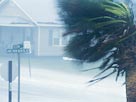They can't see how it could be the economy, because materials and labor can't be that much higher with the economy where it is, and with inflation being as low as the government claims.
The Oklahoma Insurance Department website ( tulsaworld.com/OIDFAQs) says if you compare last year's "declaration page" with the "renewal declaration," you'll see what has changed.
Consumers with "replacement cost" policies might see their premiums go up, as their home values have increased, to keep up with inflation. Perhaps you lost a discount when you or your home became ineligible or there was a claim surcharge.
Even if you haven't filed claims, rates can increase when insurers file increases based on their overall loss experience statewide. See rate filings in the "Monthly Filing Activity Reports" of OID's Property and Casualty Division ( tulsaworld.com/OIDfilings).
"Oklahomans are seeing their homeowner's premiums increasing for several reasons, the biggest being 'covered losses,' " said Vaughn Graham, president of Rich & Cartmill, an independent insurance agency in Tulsa. "Over the past five years, insurers have paid policyholders $4.7 billion for thunderstorm and wind-related claims, alone. Another recent payout for millions will be claims from recent Oklahoma wildfires."
Policyholders want to know how to lower their homeowner premiums. The department said several things might decrease your premium. As companies do not charge the same rates, shop for one offering the best coverage for the best price.
There are upgrades for your home that might provide discounts on your premium. Many companies offer discounts for hail-resistant roofs, dead-bolt locks, smoke alarms, fire extinguishers, security systems, approved fire/burglar alarms and sprinkler systems. Most companies also have discounts for both home and autos on the company policy. Save money by increasing the policy deductible (but you'll have to pay more out of pocket when filing a claim). Find a guide on choosing a policy at tulsaworld.com/OIDhomeowners
Graham suggested considering the deductible as it is the first dollar amount of a covered homeowner's claim. Review policies with your agent and things you want to protect through insurance. Does it still make sense to pay an insurer for that protection?
Companies sometimes non-renew policies due to claims (especially "frivolous claims"). State laws say they cannot cancel, non-renew or increase premiums on policies in effect 45 days or more, due just to first claims. Once you've filed more than one claim, there is no law stopping insurers from non-renewing it at your renewal date. When they "non-renew," they must provide proper written notice compliant with policy language.
When your policy is canceled or "non-renewed," finding new coverage is often a problem. Companies have strict underwriting rules and are reluctant to offer coverage to those in this situation. Call the Oklahoma Market Assistance Program 405-842-9883 or visit tulsaworld.com/OIDMAPs, a state program "designed for people having difficulty finding insurance coverage for their owner-occupied homes or mobile homes."
'Actual cash value' policies an insurance option
Homeowners often face increasing premiums on "replacement cost value" home insurance policies as the cost of replacement materials and the rising probability of environmental damage to homes in this area are increasing, said State Farm Insurance spokesman Jim Camoriano.The alternative to the more expensive RCV policies is "actual cash value" policies that pay only the depreciated value of damaged home components. Policy types offered before buyers close on home purchases are determined by initial inspections by insurance companies.
"We do require initial inspections on coverage applications, Camoriano said. "Typically an agent goes out and takes pictures. There can always be another inspection if the agent feels something there should be looked at more closely, before closing.
"Conditions that would prevent our writing policies unless sellers agree to fix them up-front are driven by the risks. Each property is different. For example, if, when we inspected the property, we found steps without handrails - could that pose a liability risk? Is the structural integrity compromised in any way? (If it's something that could be corrected.) So there are some things we look at. It's all based on safety and the present condition of the structure.
"If we go to a home and find a 20-year-old roof on it, there is no set rule about which type of policy we would issue: 'replacement cost value' or 'actual cash value.' Obviously, a replacement policy would have to cost more, to insure a 20-year-old roof, than an actual value policy would, which would pay only the depreciated value of the roof. In general, roofs with more than one layer would have to be examined closely."
Insurers encounter few roofs on which underwriting hinges on just one factor, such as multiple layers, he said. They look at age, especially when a 20-year roof is involved, as this is something definitely considered in policy type and cost.
Chances are the same roof also has more than one layer. Due to variances and material types, no hard, fast rule applies, but with a 20-year-old roof the integrity of its shingles is questionable. Hail is one thing that can destroy a roof, but so is extreme summer heat and ice-covered limb falls.
Most insurers require homes be insured for full replacement value. As the building costs in your area increase, it becomes necessary for insurers to increase the covered amount at renewal time to maintain replacement coverage. They are required to provide at least 30 days notice to you (or your designated representative) when making such a change to your policy - unless you've provided written consent to automatic increases.
Original Print Headline: Insurance premiums on rise
Tulsa World consumer writer Phil Mulkins wants to know which topics interest you. Call 918-699-8888, email your suggestion to phil.mulkins@tulsaworld.com or mail it to Tulsa World Consumer, P.O. Box 1770, Tulsa, OK 74102-1770.
 You're not alone if you're in the dark about home insurance coverage for power outages.
You're not alone if you're in the dark about home insurance coverage for power outages. The issue sparks lots of questions, and the answers are all over the grid, depending on your insurance company, your home insurance policy and the state you live in.
The issue sparks lots of questions, and the answers are all over the grid, depending on your insurance company, your home insurance policy and the state you live in.


 Insurance news headlines delivered to your email.
Insurance news headlines delivered to your email. 